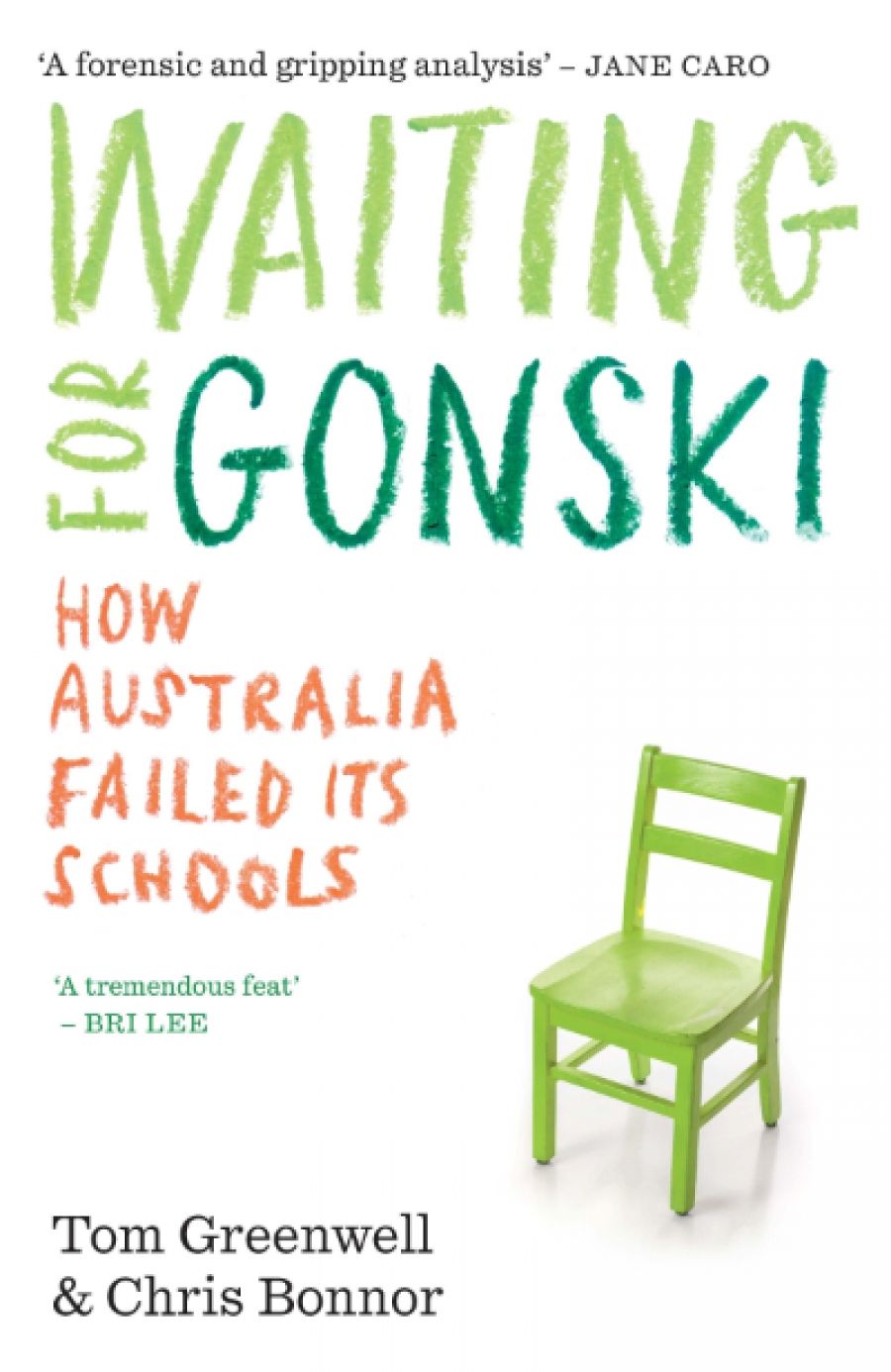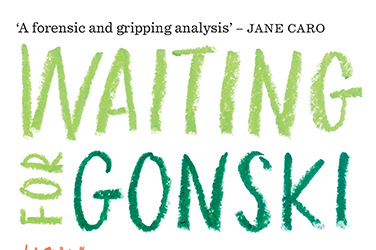
- Free Article: No
- Contents Category: Education
- Review Article: Yes
- Article Title: Uneven playing fields
- Article Subtitle: The long wait for needs-based funding
- Online Only: No
- Custom Highlight Text:
In 2011, when businessman David Gonski was reviewing education funding in Australia, he visited two primary schools in Sydney’s west. At the first, he found the principal dealing with glass from a break-in the night before. As he sat in the school’s reception, he observed that the children arriving for school were from non-English-speaking migrant backgrounds. When they toured the school, the principal told him of the challenges he faced: homes without books; scant parental involvement. The second school, just a few minutes by car down the road, seemed a world away. The children were in school uniform, Gonski was greeted by a concert of beautiful singing, the buildings were perfect. The school served a different group of students. Truancy was not a problem.
- Article Hero Image (920px wide):
%20copy.jpg)
- Article Hero Image Caption: David Gonski speaking at the 2021 Archibald Prize (Richard Milnes/Alamy)
- Featured Image (400px * 250px):

- Alt Tag (Featured Image): Ilana Snyder reviews 'Waiting for Gonski: How Australia failed its schools' by Tom Greenwell and Chris Bonnor
- Book 1 Title: Waiting for Gonski
- Book 1 Subtitle: How Australia failed its schools
- Book 1 Biblio: UNSW Press, $39.99 pb, 367 pp
- Book 1 Readings Link: booktopia.kh4ffx.net/2r0oXa
Gonski believed that ‘differences in educational outcomes should not be the result of differences in wealth, income, power or possessions’. But that morning in western Sydney, Gonski witnessed the growing divergence between the responsibilities Australian schools faced and the resources they had to meet them. The impact of family background was much more pronounced in Australia than in comparable countries like Canada, where students were able to achieve their best irrespective of upbringing or school attended. The gap between the disadvantaged and the privileged was growing.
The Gonski Report offered the School Resource Standard as a solution: first, identify the resourcing enjoyed by those schools where most students were achieving above-minimum national standards; second, take that as the best guide to the necessary resourcing for a successful education and call it the baseline level of funding which all students should receive, plus ‘loadings’ for particular school and student needs; third, set up a system to continuously verify and evaluate the calculations underpinning the first two steps. A body of independent experts would perform this task. School funding would be needs-based and sector-blind.
It seemed like a simple but powerful response to Australia’s educational inequalities, and it was welcomed by all school sectors. However, by 2015 the momentum on school funding reform had stalled. Even though the Gonski Report generated optimism, the problems have only gotten worse. The system has become even more inequitable with additional funding going to less needy schools. Over the past decade, government funding to non-government schools has grown at five times the rate of funding for government schools.
Waiting for Gonski provides a clear-eyed, compelling account of the Gonski reforms, recommended more than a decade ago, and why they failed. The majority of government schools are yet to be funded to the School Resource Standard, while many non-government schools are over-funded, especially as fees sit on top of the government funding.
In a meticulously researched book, Greenwell and Bonnor set themselves the task of examining how we reached such pervasive inequality. We learn that inequality was a structural feature from the outset in the establishment of Australia’s public primary schools between 1872 and 1893. The schools were free, compulsory, and secular, but state aid to church schools was abolished. The system created the first ‘unlevel playing field’ – a dual system of schooling from the beginning: one public and one private. This changed after the 1960s, when the private sector successfully lobbied for funding, but, Greenwell and Bonnor point out, ‘one unlevel playing field replaced another’.
Hope for change came with the Karmel Report, published in 1973. However, as Simon Marginson wrote in 1984, it ‘did not develop an understanding of the dynamics of the dual system of schooling that operates in Australia’ and it ‘failed to go to the roots of inequalities in schooling’. Greenwell and Bonnor argue that Gonski also failed to address this issue. Rather than tackle the complexities of the public–private system, Gonski left untouched the issues of school fees and very different school sectors. Inequities in school operations, including enrolment policies, were not considered.
The Gonski review recommended adequate funding for schools where students had greater needs, but did not seek to explain why these students were concentrated within disadvantaged schools, most of them government schools. Although it recognised the impact of peers on student achievement in a system where students’ socioeconomic background determines the school they can afford to attend, the review did not make the connection between this systemic reality and the worrying low levels of student achievement in Australia.
Ken Boston, a member of the Gonski review panel, now attributes much of our educational woes to weaknesses in the report and failures of implementation. Noting the model was to be needs-based and sector-blind, he says: ‘Quite the opposite has occurred.’ Gonski made ‘needs-based’ equity funding part of our vocabulary but not part of our system. In the face of intense lobbying, many of the Gonski recommendations weren’t taken up or were twisted in ways that reinforced existing inequities. Sectarian education politics stymied funding reform.
Gonski failed because successive governments didn’t implement its recommendations. Julia Gillard was constrained by her own commitment that no school would lose a dollar. When the Turnbull government passed needs-based education funding legislation in 2017, its goal wouldn’t be achieved for at least a decade. More recently, the Morrison government established funding for private schools outside the needs-based model. This was designed to soften the financial impact for non-government schools during the transition to a new funding model but served to further undermine Gonski. Needs-based funding has been continually delayed and, even with a possible change of government, there is absolutely no reason to expect funding models to alter.
This important book demonstrates how politics, self-interest, and an incapacity to think beyond the forward estimates can overturn even the most commendable objectives. Hundreds of billions of dollars have flowed into schools across the country. Only some of that money has gone where it was most needed, and the governments that provided it know little about how it was spent. They do know, however, that it hasn’t helped.
Over a decade later, the problems have worsened. Educational outcomes for students in Australia’s schools continue to decline, and there is an increasing correlation between social disadvantage and under-achievement. Commonwealth funding continues to favour wealthier private schools, and Australian students have slid down the world rankings in reading, science, and maths. NAPLAN results in maths and reading improve infinitesimally. Many schools still do not have the resources or the teachers they need, and the learning gap between the most advantaged and disadvantaged students has increased. Public schools have not received all the money they were told they would get, and probably never will.
The title of Greenwell and Bonnor’s book alludes, of course, to Beckett’s Waiting for Godot. We are all waiting for something or other – for hope, for relief, for freedom, for redemption. But Greenwell and Bonnor believe there is an alternative. Unlike Didi and Gogo, the two tramps who find themselves in a situation which they don’t understand and over which they have no control, we can act, we can change things, we can make a difference. Waiting for Gonski ends with a bold call to action. For our education system to succeed, nothing less than substantial structural change will suffice. In the book’s final words: ‘We can create something better for Australia’s schools and kids.’


Comments powered by CComment